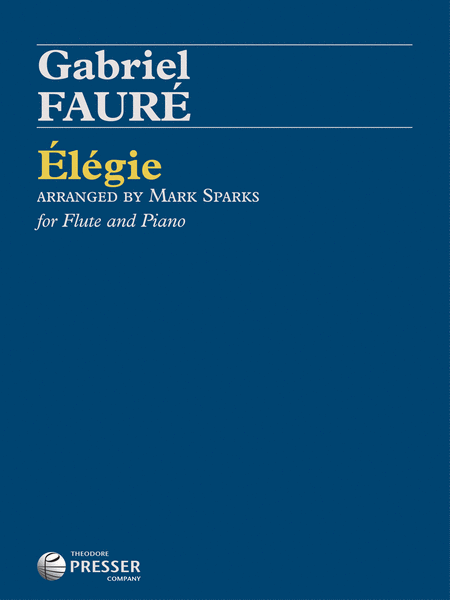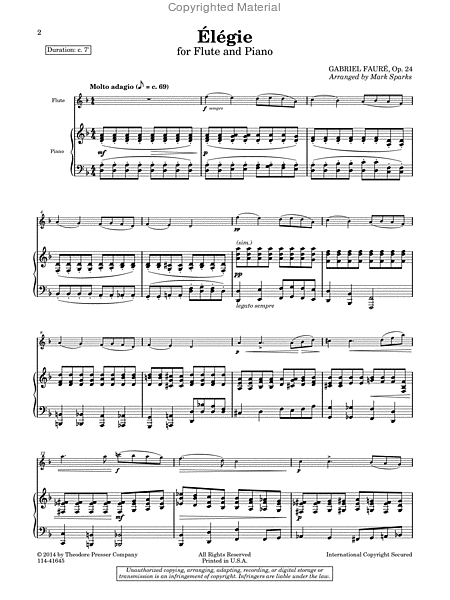Elegie, Op. 24
Arrangedfor Flute and Piano
-
Ships in 1 to 2 weeks
Details
Description
SKU: PR.114416450
Arrangedfor Flute and Piano. Composed by Gabriel Faure. Arranged by Mark Sparks. Sws. Romantic. Set of Score and Parts. With Standard notation. Composed 1880. 8+2 pages. Duration 7 minutes. Theodore Presser Company #114-41645. Published by Theodore Presser Company (PR.114416450).ISBN 9781598067828. UPC: 680160620548. 9x12 inches.
Fauré’s celebrated Élégie for Cello has been gracefully and elegantly adapted by Mark Sparks, principal flute of the Saint Louis Symphony. Transposed to D minor to maximize richness and sparkle, flutists now have a “new” work by Fauré in the repertory. For advanced performers.
From the scanned back cover:NOTES ON THE EDITIONOriginally intended as the slow movement of a sonata for cello and piano, Fauré composed the Élégie in 1880. The sonata was never completed, and the current work was premiered in 1883. Pablo Casals requested from the composer the very popular adaptation for cello and orchestra, which he premiered in 1901. The Élégie is one of Fauré’s most Romantic and direct expressions, and creating a version for flute, with its very personal voice, seems both natural and appealing. One can scarcely think of a more beautiful, heart-rending melody than the Élégie’s sustained opening phrase.Breath marks have not been included in this edition, in order to allow the performer freedom of choice in the matter; breaths should be taken as infrequently as possible, with forethought and discretion. Control of the sostenuto and vibrato are also of greatest importance. The work has been transposed from the original key of C minor to D minor, for ease of tone production and intonation.I would like to thank Christian Woehr and Peter Henderson for their help in preparing the materials; the present edition takes into account both the original piano part of 1880, and extra modifications to the accompaniment from the later orchestration (such as the inner voicing at bars 24-29).— Mark Sparks, July 2014.


 Share
Share